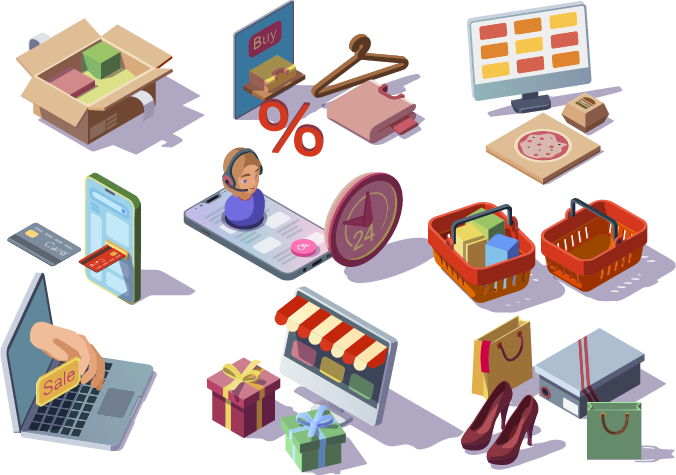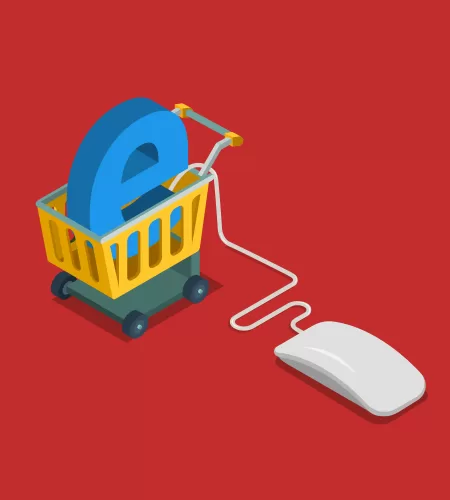E-commerce Gamification is the application of game mechanics in situations that are not gaming-related. It’s an interactive, engaging design strategy that motivates people to execute particular activities by providing enjoyable and rewarding experiences. In other words, it makes boring jobs enjoyable!
E-commerce Gamification may be applied to many aspects of eCommerce, including email marketing campaigns and website UX design. It’s a strong tool that may help you enhance conversions, client loyalty, and revenue for your eCommerce business. An application or eCommerce website service’s game-like components engage users and enhance the shopping experience for clients. Adding features like points, leaderboards, medals, and levels is the norm in e-commerce.

Gamifying a user experience might encourage behaviors. They may be making a purchase or opening an account, for instance. Users who connect with your brand online are encouraged to take action by its specific design components. Instead, of pressuring individuals to play games, it focuses on utilizing game mechanisms to accomplish specified outcomes, which are almost always beneficial.
A fun, yet frequently underutilized approach to overcoming some of the most prevalent but difficult e-commerce obstacles is gamification. Creating a memorable unboxing experience, earning customer loyalty, and abandoning carts are just a few of the difficulties faced by e-commerce businesses of all sizes. These issues can all be solved in similar ways. But, adding E-commerce Gamification to your online business is a way that is frequently ignored.
10 Ways to Strategize Your E-commerce Gamification into Business
Fun Product Suggestions.
Make product suggestions based on a user’s preferences for a product you are selling, then relate those recommendations to the user’s personality, pets, spirit animals, etc. The goods that are most matched to your needs are revealed after you respond to a few straightforward questions about your gender, spending limit, and lifestyle. Another option to apply the same concept is to develop a personality test based on a popular film or television program. For instance, “Are you more like the Hulk or Ironman?” While conducting promotions or throughout the holiday season, set this off.
Honour Loyalty Program.
Provide a points system so customers may accumulate points via repeated purchases that can then be redeemed for both tangible and intangible rewards This is a powerful strategy for boosting loyalty and repeat sales. Companies with well-known loyalty programs include Nordstrom and Barnes and Noble.
The Joy of Quizzes.
Make enjoyable puzzles based on the things you sell on your website. These puzzles can be connected to the product purchasing pages or a points system, which can then be redeemed for money or in-kind prizes.
A wonderful example of a product quiz is this one that assists consumers in selecting the ideal pair of sunglasses. To increase product awareness, you may also make quizzes. This has a double-edged effect since the buyer connects your product to enjoyment, amusement, and feelings of positive reinforcement.
A Chance Fate- Spin the Wheel.
Several websites are utilizing this trend of offering wheels of fate and giving away discounts and freebies.
This kind of E-commerce Gamification platform is useful for collecting new users’ email addresses. Using the allure of a gift might help you build your email list of subscribers. This is one of the simplest methods for starting the initial buy.
The following plugins are the most effective for Shopify-based e-commerce websites:
- Game of Chance by Secomapp.
- You may use the following plugins to power your WordPress websites if you don’t operate a Shopify store.
- Future-looking wheel e-commerce WooCommerce WordPress opt-in wheel.
Fun Slogan Competition.
A tiny e-commerce company might gain a lot by running a slogan competition on Facebook or Twitter and soliciting suggestions from followers.
This is a strategy that is frequently used. This is because a slogan contest encourages participation, and word-of-mouth advertising, and helps create a stronger, more enduring company image.
Generate Avatars.
Let users make distinctive and customized avatars. The avatars receive points for each purchase that they make, but they cannot be used to purchase additional features or benefits. Habitica is an online “checklist” that rewards your virtual avatar with experience for completing magical adventures as you cross things off. This is an excellent illustration of how routine duties may be made more fun with the straightforward purpose of enhancing the quality of life.
A similar idea of E-commerce Gamification may be used in your online store to foster a sense of ownership and competition. Once a specific amount has been spent, a competitor can get benefits and a new avatar.
Extra Points for Referrals and Loyalty.
One of the most popular types of ramifications utilized in business is referral-based discounts. An incentive is given to clients who refer new customers to a business. On the other side, by utilizing a points-based system, loyalty may be gamified. This is a fantastic concept to utilize in conjunction with the custom avatars mentioned before.
Giveaway Scratched Coupons to E-mail.
A card that the user interacts with to disclose a concealed immediate prize is analogous to the roulette wheel in this regard. In the same way, it’s typical for them to be various discounts or promotions meant to promote shopping.
In addition to phases when the buyer is already engaged in the brand, such as the final checkout page, they are frequently employed in emails.
Eye Spy.
Find a hidden element in the image before the timer expires by looking at it. The image could appear a little perplexing, but those who make an honest attempt will easily find the required item. Most of the time, businesses want that secret ingredient to be one of their goods.
Users may be presented with interesting information about a product as soon as they locate it. An enjoyable pastime with a manageable objective that wouldn’t take up too much of your customers’ time. The game is an easy, hassle-free, and enjoyable approach to getting customers to revisit your website.
Create urgency to an Audience- Limited Time Offer.
The ticking timer next to a product is one of the more traditional e-commerce Gamification techniques used in eCommerce. The timer informs the viewer of the product’s availability. It informs consumers of the remaining time until the deal expires. Users are tempted to buy a good right away when they see a desirable premium item at a reasonable price.
Buy immediately or pass up the chance to get the special item for such a low price. The timer makes it urgent to purchase before the stock is depleted. The transaction seems to buyers like a once-in-a-lifetime chance. As a result, people act quickly to purchase it without giving it any thought.
To wrap up
E-commerce Gamification is a tactic that is revolutionizing e-commerce shopping and offers several benefits to both consumers and businesses like retailers and brands. Turning the traditional browsing and purchase operations into a game promotes involvement, brings in more devoted clients, and sparks sustained interest in the business.
The procedure a buyer goes through to make a purchase is not necessarily logical. If there is a clearly defined path of action with markers pointing to further stages, they are more inclined to act. E-commerce Gamification in business enables the consumer to go through a present set of possibilities, ideally culminating in a purchase. Small e-commerce companies may use this identical strategy to encourage various favorable behaviors, from referral to purchase.
To learn more about ecommerce related information you can subscribe to the website and share your valuable comments in the comment box- Firsthub Blogs.


Comments